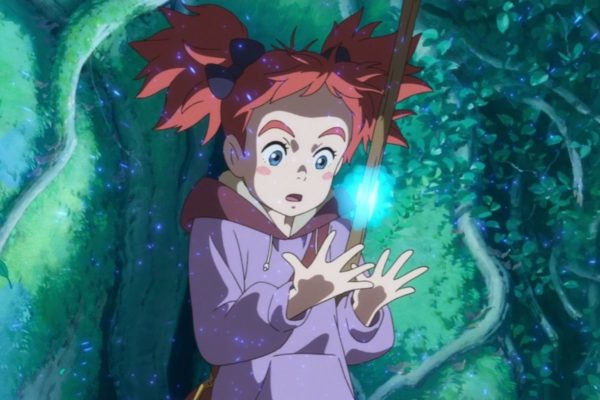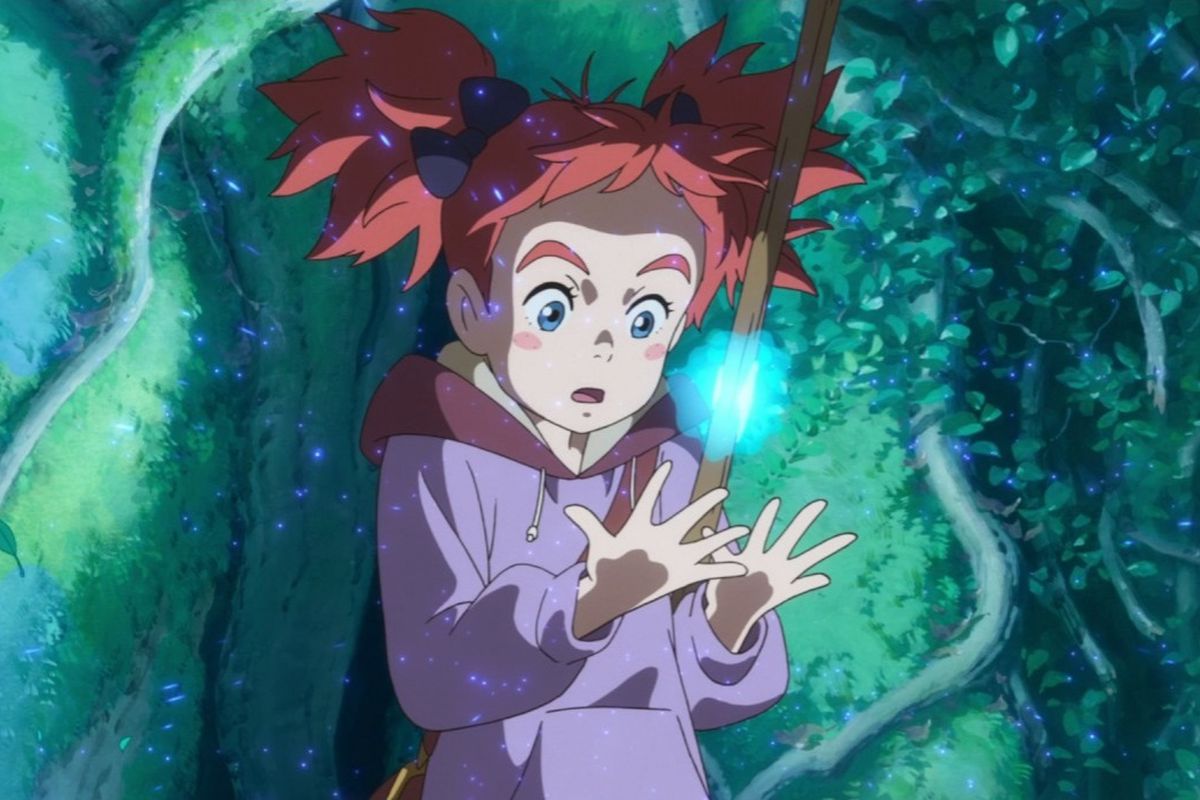
“Ponoc,” explains producer Yoshiaki Nishimura, “is Croatian for ‘midnight,’” the moment where one day ends and another begins. For Nishimura, and the rest of the newly formed Studio Ponoc, the midnight stroke was the close of Studio Ghibli and the retirement of legendary director Hayao Miyazaki. Their first film, “Mary and the Witch’s Flower,” is an attempt to captain the old ship under a new helmsman, director Hiromasa Yonebayashi, whose two previous films at Ghibli (“Secret World of Arietty” and “When Marnie Was There”) were both critical and commercial successes.
The result is a movie that feels as comfortable as it is colorful. Yonebayashi has played it safe, pulling tropes from virtually every Ghibli masterpiece. “Mary” involves a young girl (as do most Miyazaki films) who is whisked away by a cat (“The Cat Returns”) — on a broomstick (“Kiki’s Delivery Service”) that she finds in an ancient tree (“My Neighbor Totoro”) — to a magical world (“Spirited Away”) in the clouds (“Castle in the Sky”). But though the core concepts of “Mary” are utterly derivative, it still manages to set itself apart from the modern flood of animated movies with bright visuals full of the intricate detail that established Ghibli’s place in the history of animation.
After a pensive pastoral introduction, Mary’s entry into the Hogwarts-esque Endor College absolutely overwhelms the senses. Magic intertwines with technology in machines that burst with gears, pipes and claws, a Seussian wonderland that surges with energy. Anthropomorphic animals happily cook in the extensive dining halls, while students get a workout by running on treadmills poised in front of jets of fire. It’s all delightfully imaginative, full of beautiful and quirky creatures that equally populate both the center-stage plot and the distant background. Like most Ghibli films, “Mary and the Witch’s Flower” will require at least half a dozen viewings to fully appreciate the richness of its world.
But if “Spirited Away” was about a sinister world with a hidden heart, “Mary” is about an idyllic universe with a dark underbelly. It never becomes as dark or as desperate as some Miyazaki films, staying firmly in the territory of “family movie,” but it throws in a welcome handful of twisted imagination that is just off-putting enough to disturb.
Nevertheless, despite its charm and detail, it’s hard not to easily recognize “Mary and the Witch’s Flower” as a knockoff rather than the genuine Ghibli product. Though still impressively detailed and animated by any other standard, compared to most Ghibli masterpieces its backgrounds are significantly less crisp and its animation has slightly less spunk and personality. Though it’s consistently fun, the characters are somewhat bland, and it lacks any emotional gut-punch to speak of (especially next to the tear-jerking Ghibli classics, including Yonebayashi’s last film “When Marnie Was There”). It doesn’t have any complex messages, and while it’s certainly beautiful, it fails to capture the same sense of ancient, overwhelming awe that Ghibli reveled in.
Perhaps it’s not entirely fair to constantly compare “Mary and the Witch’s Flower” to its predecessors, but Studio Ponoc hardly attempts to distance itself. “Mary” isn’t a classic. It isn’t the best animated movie of the year, as Ghibli films often were. But it is a charming, delightful, simple and fantastical tale of a little girl in a magical world, and it is definitely more than enough to establish Ponoc as the Ghibli of a new generation. “Mary and the Witch’s Flower” misses the point of how Ghibli movies created such tremendous cultural staying power, but it captures what brought us to Ghibli in the first place: pure fun and unrivaled imagination.
Contact Noah Howard at noah364 ‘at’ stanford.edu.
